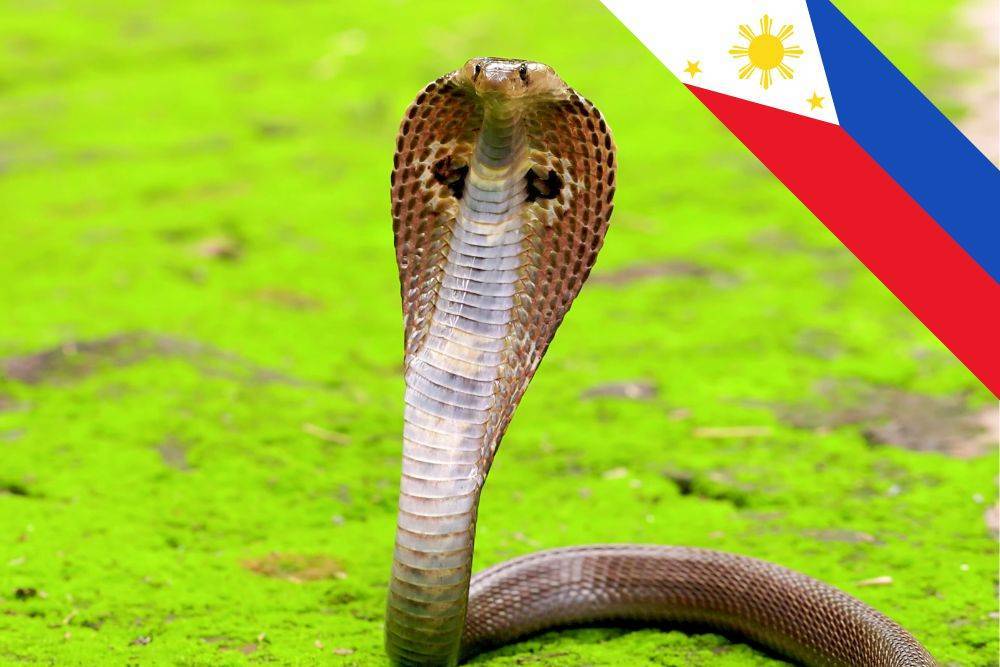Senator Raffy Tulfo drew attention to the alarming scarcity of cobra antivenom in rural areas of the Philippines.
He underscored the dire consequences of this shortage, citing tragic incidents. Multiple individuals succumbed to snakebites due to the unavailability of the life-saving antidote in local hospitals.
Incidents Highlighted by Senator Tulfo
Firstly, Senator Tulfo recounted distressing accounts from various regions where victims tragically lost their lives after being bitten by Philippine Cobras. These regions include Isabela, Catarman, Toledo City, and Ifugao. These incidents stress the urgent need for accessible antivenom in remote areas to prevent further casualties.
Venomous Snakes in the Philippines
According to Herpetologist Emerson Y. Sy from the Philippine Center for Terrestrial and Aquatic Research, there are 147 snake species in the Philippines. Of those 147 snakes, 32 are considered venomous.
Recognising Snakebite Symptoms
Recognising the symptoms of snakebites becomes paramount for prompt and effective medical intervention. Here are the common symptoms of venomous snake bites at different stages:
Immediate Symptoms
Upon being bitten by a snake, individuals may experience immediate symptoms that serve as red flags for the presence of venom. These symptoms include localised pain, swelling, and discolouration around the bite site. Additionally, puncture wounds or fang marks may be visible, offering visual confirmation of the snakebite.
Systemic Symptoms
Beyond localised effects, systemic symptoms may manifest as venom spreads throughout the body. These symptoms can vary depending on the type of snake and the potency of its venom. Common systemic symptoms outlined by the CDC include nausea, vomiting, sweating, weakness, and difficulty breathing. These signs indicate a potentially life-threatening situation, necessitating urgent medical attention.
Neurological Symptoms
In cases of neurotoxic snakebites, which involve venom that affects the nervous system, specific neurological symptoms may arise. These can include blurred vision, dizziness, slurred speech, muscle weakness, and paralysis. Prompt recognition of these symptoms is crucial for initiating appropriate medical interventions to mitigate the progression of venom-induced neurological effects.
Dependency on RITM for Antivenom
Senator Tulfo emphasised that the Research Institute for Tropical Medicine (RITM) is the sole producer and distributor of Purified Cobra Antivenom (PCAV) in the Philippines. He also lamented the fact that individuals from rural provinces are compelled to travel to Metro Manila to obtain the antidote, which makes it more challenging for snake bite victims to have access to timely medical care.
Addressing Public Health Disparities
Senator Tulfo also denounced the disparity in healthcare access between urban and rural areas, describing it as a pressing public health concern. Consequently, he underlined the need for comprehensive measures to ensure fair distribution of antivenom and trained medical personnel across the country. This is particularly needed in regions with high incidences of snakebites.
Challenges in Data Collection and Policy Response
While referencing a study on snakebite incidents in ASEAN countries, Senator Tulfo questioned the accuracy of the data and highlighted the lack of government-led research on the matter. He also stressed the urgency of funding research initiatives to gather comprehensive data on snakebites’ health and economic impact, enabling the development of targeted strategies to address the issue.
Call for Policy Action
Therefore, Senator Tulfo called for immediate action to rectify the longstanding neglect of snakebite management in the Philippines. He invoked the late former Senator Miriam Defensor-Santiago’s resolution from 2012, urging the Senate to prioritise the establishment of antivenom banks in regional hospitals. Additionally, he emphasised the importance of protecting individuals who defend themselves against venomous animals, proposing measures to mitigate human-wildlife conflicts.
Conclusion
In conclusion, Senator Raffy Tulfo’s address underscores the urgent need for cobra antivenom in rural Philippines. This issue is brought to the forefront due to tragic deaths in regions like Isabela, Catarman, Toledo City, and Ifugao. With 32 venomous snake species in the country, recognising snakebite symptoms and ensuring timely medical intervention is crucial. Additionally, Tulfo calls for establishing antivenom banks in regional hospitals and improved healthcare access to address this public health issue and protect rural communities.
Have a pressing question for a doctor? Medical Channel Asia has launched a community forum page where you can get questions answered by a medical specialist. Visit the community forum here.

